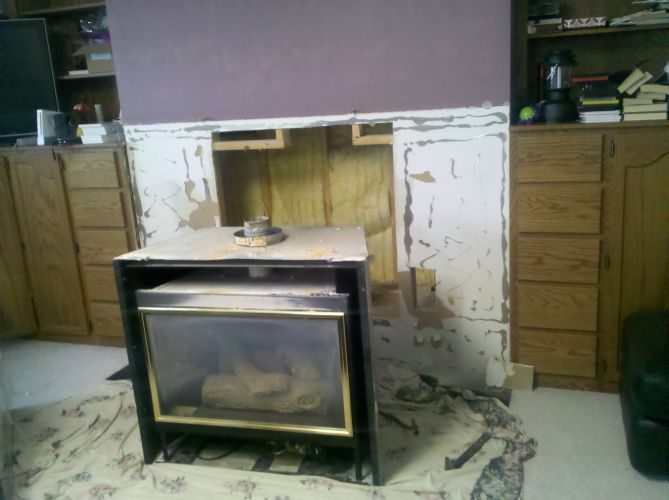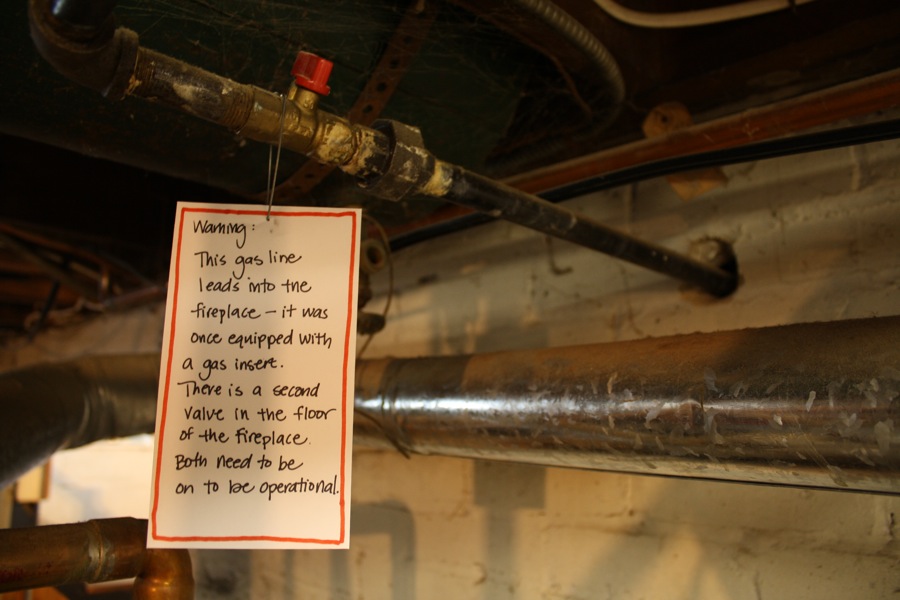Gas Fireplace Removal
Removing a gas fireplace can be a complex and potentially hazardous task that requires careful planning and execution. Whether you are removing the fireplace to update your living space, address safety concerns, or repurpose the area, understanding the steps and considerations involved is crucial. The removal process involves several key stages: preparation, disconnection of the gas line, dismantling the fireplace structure, managing the venting system, repairing the wall and floor, and ensuring compliance with local building codes. By following these steps meticulously, you can safely and effectively remove a gas fireplace.

The first step in gas fireplace removal is preparation. Start by gathering all necessary tools and materials, which may include wrenches, screwdrivers, a utility knife, a pry bar, safety gloves, and protective eyewear. It’s important to turn off the gas supply to the fireplace by locating the shut-off valve and ensuring it is closed. For added safety, you may also want to turn off the main gas supply to the house. Additionally, make sure to disconnect any electrical connections if the fireplace has a blower or other powered components. Clearing the area around the fireplace and laying down protective coverings can help prevent damage to your floors and furnishings during the removal process.

Disconnecting the gas line is one of the most critical steps in removing a gas fireplace. This should be done with utmost caution to avoid gas leaks and potential hazards. If you are not experienced with handling gas lines, it is highly recommended to hire a licensed professional to perform this task. The gas line is typically connected to the fireplace through a flexible hose or rigid piping. Use an appropriate wrench to loosen and disconnect the gas line, ensuring that the gas supply remains off throughout the process. After disconnection, cap the gas line securely to prevent any leaks.
Dismantling the fireplace structure involves removing the exterior components, such as the mantel, surround, and hearth, followed by the fireplace insert itself. Begin by carefully removing any trim or molding around the fireplace. Depending on the construction, these pieces may be attached with screws, nails, or adhesive. Use a utility knife to cut through any caulk or sealant. Once the exterior components are removed, unscrew and detach the fireplace insert from the framing. This step may require assistance due to the weight and bulkiness of the insert. Carefully lift and remove the insert from its location.

Managing the venting system is another important aspect of gas fireplace removal. Gas fireplaces are often vented through the wall or roof to expel combustion gases. The venting system must be dismantled and sealed properly to prevent any drafts or water leaks. If the fireplace is vented through a chimney, you may need to cap the chimney to prevent water ingress. For direct vent systems, remove the vent pipe and seal the opening in the wall or roof with appropriate materials, such as flashing and weatherproof sealant. Ensuring a proper seal is essential to maintain the integrity of your home’s structure.
Once the fireplace and venting system are removed, you will need to repair the wall and floor where the fireplace was installed. This may involve patching holes, repairing drywall, and restoring any flooring that was removed or damaged during the process. If the removal of the fireplace leaves a large gap in the wall, you may need to install new framing and drywall to fill the space. Sand, prime, and paint the repaired areas to match the surrounding surfaces. Reinstall any baseboards or trim that were removed during the dismantling process to achieve a finished look.

Finally, ensure that all work complies with local building codes and regulations. Gas fireplace removal can affect the structural integrity and safety of your home, so it is essential to follow any applicable codes and obtain necessary permits. If you are unsure about any aspect of the removal process, consulting with a professional contractor or building inspector can provide valuable guidance. By adhering to regulations and best practices, you can safely remove your gas fireplace and repurpose the space for your desired use, enhancing both the functionality and aesthetics of your home.
Removing a gas fireplace involves careful preparation, safe disconnection of the gas line, dismantling the fireplace structure, managing the venting system, repairing the wall and floor, and ensuring compliance with local codes. While it is possible to undertake this project as a DIY task, the complexity and potential hazards involved make it advisable to seek professional assistance, particularly for handling gas connections. With the right approach and attention to detail, you can successfully remove a gas fireplace and create a new space that meets your needs and preferences.

What Happens If I Skip Getting My Gas Fireplace Serviced?

Gas fireplace removal (# 348459) Builderscrack

Gas fireplace removal (# 348459) Builderscrack

How Hot Does A Gas Fireplace Get? (Everything To Know)

Best Gas Fireplace Repair- Emergency Fireplace Service 24/7

Remove A Gas Fireplace merrypad

Gas Fireplace Install – A Complete Transformation

Related Posts:
- Gas Fireplace Use
- Gas Fireplace No Pilot Light
- Gas Fireplace Inserts with Blower Fan
- Gas Fireplace Cabinets
- Gas Fireplace Direct Vent Kit
- Gas Fireplace Pilot Goes Out
- Gas Fireplace Chimney Cap
- Gas Fireplace Tune Up
- Gas Fireplace Connection Kit
- Ventless Gas Fireplace Carbon Monoxide
Gas fireplaces have become increasingly popular in homes due to their convenience and ease of use. However, there may come a time when you need to remove a gas fireplace for various reasons, such as renovations or upgrading to a different type of fireplace. Gas fireplace removal is not a simple task and should be done carefully to ensure the safety and proper disposal of the components. In this guide, we will discuss the process of removing a gas fireplace, including the benefits, pros and cons, common mistakes to avoid, and frequently asked questions.
Benefits of Gas Fireplace Removal:
1. Improved Aesthetics: Removing a gas fireplace can open up space in a room and provide a more streamlined look to your home decor. This can be especially beneficial if you are looking to update the design of your living space.
2. Energy Efficiency: Gas fireplaces can be costly to operate, especially if they are older models that are not energy efficient. By removing a gas fireplace, you can potentially save on energy costs in the long run.
3. Safety Concerns: Older gas fireplaces may pose safety risks due to faulty components or improper installation. Removing a gas fireplace can eliminate these safety concerns and provide peace of mind for you and your family.
4. Flexibility in Design: By removing a gas fireplace, you have the opportunity to explore other heating options such as electric fireplaces or traditional wood-burning fireplaces. This can give you more flexibility in choosing a fireplace that better suits your needs and preferences.
Pros and Cons of Gas Fireplace Removal:
Pros:
– Improved aesthetics and space utilization
– Potential energy savings
– Elimination of safety concerns
– Flexibility in choosing alternative heating options
Cons:
– Costly removal process
– Disruption during renovation
– Potential damage to surrounding walls or flooring
– Need for professional help with gas line disconnection
Common Mistakes to Avoid:
1. Attempting DIY Removal: Gas fireplace removal involves working with potentially hazardous components such as gas lines and electrical wiring. It is essential to hire professionals who have the expertise and experience in safely removing gas fireplaces.
2. Neglecting Proper Disposal: Gas fireplaces contain various components that need to be disposed of properly according to local regulations. Improper disposal can harm the environment or pose safety risks.
3. Skipping Gas Line Disconnection: Disconnecting the gas line is a crucial step in gas fireplace removal to prevent gas leaks or other hazards. This should only be done by qualified professionals.
4. Not Checking for Structural Integrity: Before removing a gas fireplace, it is important to assess the structural integrity of the surrounding walls and flooring to avoid any potential damage during the removal process.
1. Is it necessary to hire professionals for gas fireplace removal?
It is highly recommended to hire professionals for gas fireplace removal due to the complexities involved in working with gas lines and electrical components.
2. How much does it cost to remove a gas fireplace?
The cost of gas fireplace removal can vary depending on factors such as the complexity of the removal process, location, and any additional services required.
3. Can I replace my gas fireplace with another type of fireplace?
Yes, you can replace your gas fireplace with alternative heating options such as electric fireplaces or traditional wood-burning fireplaces after removing the gas fireplace.
4. Are there any permits required for gas fireplace removal?
Permit requirements for gas fireplace removal may vary depending on local regulations. It is advisable to check with local authorities before starting the removal process.
5. How long does it take to remove a gas fireplace?
The time taken to remove a gas fireplace can vary depending on various factors such as the complexity of the removal process, accessibility, and any additional services required.
Gas fireplace removal can offer several benefits such as improved aesthetics, energy efficiency, safety concerns, and flexibility in design. However, it is essential to be aware of the pros and cons, common mistakes to avoid, and frequently asked questions before proceeding with the removal process. Hiring professionals for gas fireplace removal is highly recommended to ensure the safety and proper disposal of components. If you are considering removing a gas fireplace, make sure to carefully plan and research the process to ensure a smooth and successful removal.
Overall, gas fireplace removal can be a beneficial project for homeowners looking to update their living space, improve energy efficiency, address safety concerns, and have more flexibility in choosing alternative heating options. By following the proper steps and hiring professionals for the removal process, you can ensure a safe and successful outcome. Remember to consider the costs, potential disruptions, and permit requirements before starting the removal process. With careful planning and execution, you can enjoy a renovated living space with a new fireplace that better suits your needs and preferences.